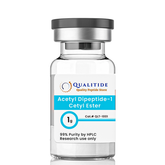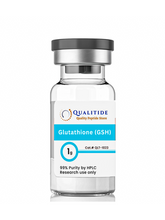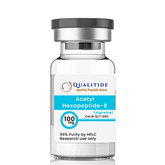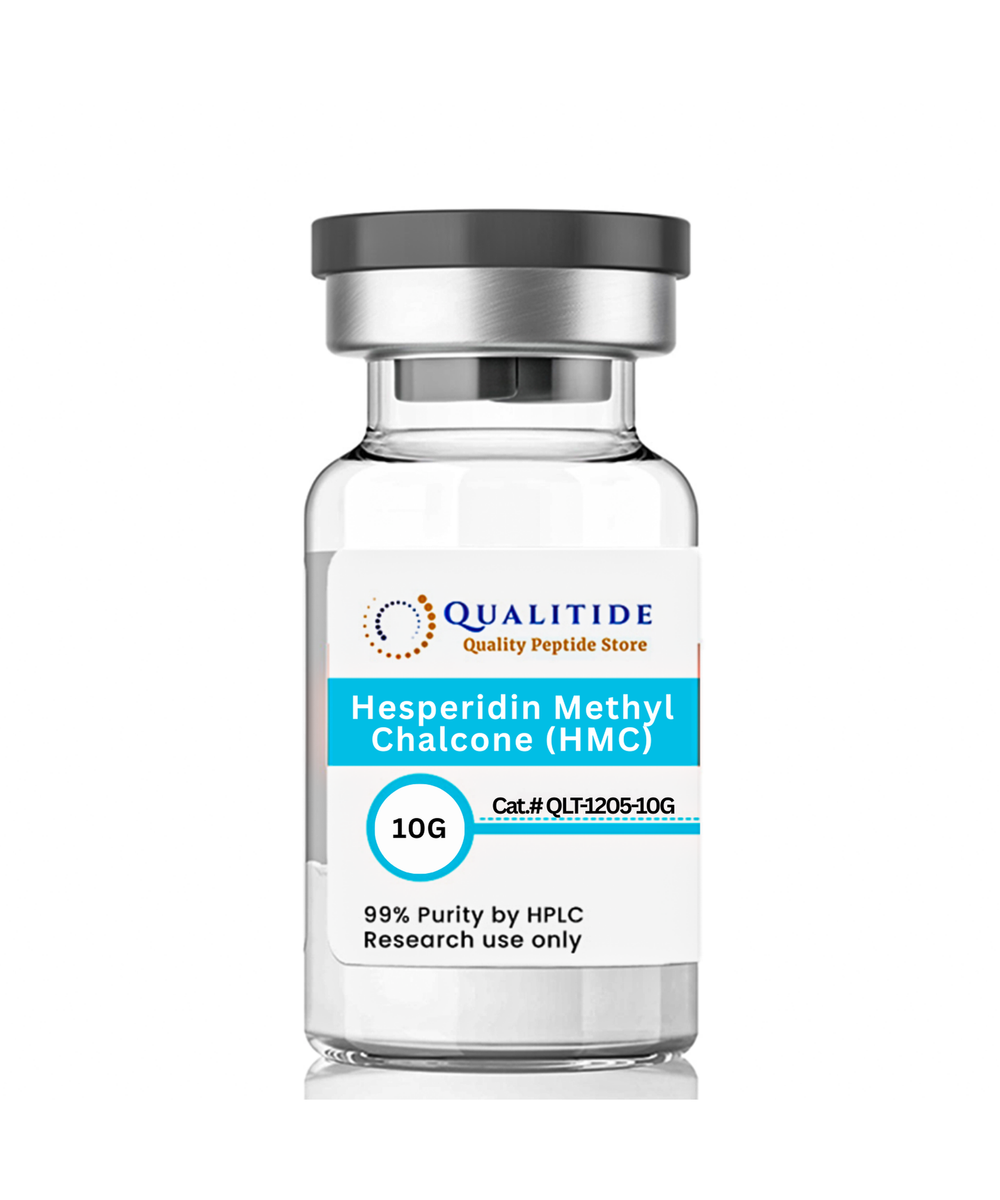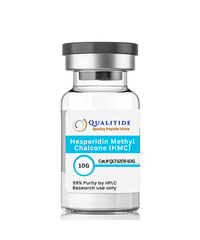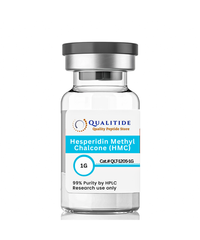Product Usage: This product is intended as a research chemical only. This designation permits the use of research chemicals strictly for in vitro testing and laboratory research, but not for human or animal.. This product should only be handled by licensed, qualified professionals. All information available on this website is for educational purposes only. This product is not a drug, food, or cosmetic and may not be misbranded, misused, or mislabeled as such. Acknowledged to the Terms and Conditions, the customer hereby agrees to take full responsibility on how to use the product.
Description
xHesperidin Methyl Chalcone (HMC) is a potent antioxidant with barrier repair function. Now HMC is considered as A Must-Have Ingredient for Radiant Skin. It is able to increase Filaggrin and B-glucocerebrosidase which are essential for Ceramide production. The other notable use for HMC is its ability to reduce capillary permeability for dark circles around the eyes. One major drawback is its super bright color; it is highlighter yellow and can stain anything it touches. Using it at high concentrations can make your skin appear jaundiced.
What is Hesperidin Methyl Chalcone?
Hesperidin methyl chalcone (HMC) is a flavonoid that has strong free radical quenching properties and is a highly complex compound typically found in bright colored plants and flowers. In skincare, it’s primarily used as an antioxidant, with noted effects on circulation for reducing dark circles and melanin synthesis.
A fun fact about hesperidin: when fermented citrus peels were tested on the skin to see what would happen after UV exposure, collagen production actually INCREASED in the skin cells (whereas, it normally decreases after UV exposure).
Chemical Info
Molecular Formula: C29H36O15
Molecular Weight: 624.6 g/mol
CAS #: 24292-52-2
Synonyms:
-
- Hesperidin methylchalcone
- EYELISS
Hesperidin vs. Hesperidin methyl chalcone: structure and function
Pure hesperidin that naturally occurs in citrus fruits has poor solubility in water, which essentially means its absorption and distribution inside the body are minimal. HMC is produced by a simple chemical reaction under alkaline conditions that involves the methylation (i.e. adding methyl groups) of hesperidin. Experiments have demonstrated that such structural changes greatly improve the absorption and transport of related compounds. It is not a surprise that the methylated forms of some flavonoids are shown to have stronger benefits than their unmodified versions.
What are the benefits of Hesperidin Methyl Chalcone?
- Anti-dark Circles
- Anti-puffiness
- Antioxidant
- Barrier Repair
- Anti-aging
HMC is a common ingredient found in eye creams because of its effective anti-dark circles and anti-puffiness properties. Facial creams and other topical products used to treat sun damage also contain the flavonoid for its anti-melanogenic and anti-inflammatory action, and ability to restore the skin barrier function. Signs of aging on the body and hands (e.g. appearance of dark spots and fine lines) can also be treated with topical creams formulated with HMC, which also offers sun protection, hydration, and pH regulation. There are no known adverse effects or reactivity with other cosmetic ingredients.
The concentration of HMC in cosmetic products is typically 0.5 to 3%, though, higher concentrations have been tested without reports of adverse effects. One of the most notable benefits is the reduction of bags and puffiness under the eyes by 65% just after 28 days of HMC application. [1] For treating dark circles under the eyes, it lowers the filtration rate of capillaries near the skin surface to decrease blood flow through them, thereby, reducing the dark bluish discolouration under the eyes. These functions make HMC a common ingredient found in anti-aging eye creams and facial care. Moreover, the reduction in capillary permeation is also helpful in the treatment of varicose veins.
A topical cream containing 2% hesperidin is able to stimulate recovery of the barrier function on damaged skin by restoring hydration that is up to 50% of the healthy level in just 2 hours. Furthermore, it reverses the effect of thinning skin and barrier damage from the application of glucocorticoids during the treatment of eczema or other skin conditions by stimulating the proliferation of epidermal cells to increase skin thickness.[2,3] It is also able to reverse the effects of declining barrier function associated with aging skin such as dryness and loss of moisture retention.
Other anti-aging effects of HMC include dark spot treatment by reducing melanin synthesis, and protecting the skin from cell aging due to UV damage – with significant photoprotective effect. Hesperidin also possesses soothing, anti-inflammatory, and anti-redness properties, which are key functions used in cosmetics for treating irritated skin after injury, sun or allergen exposure, and inflammatory pain. An interesting observation on fermented citrus peel is its ability to counteract the processes of UV irradiation on skin cells. While UV normally increases collagen degradation that leads to cell aging, application of the hesperidin-rich fermented peel actually increased collagen synthesis, decreased its degradation, and even reduced the levels of markers typically associated with cell senescence.4
Formulation Consideration
Like all other antioxidants, HMC works best with other antioxidants to provide a synergistic effect. It has strong free radical quenching properties similar to other flavonoids used in cosmetics but requires permeation enhancers to help with skin absorption, otherwise, it would end up drying as a powder on the skin surface. Another characteristic of hesperidin is it’s typically found in bright colored plants or flowers. As a result, products that contain HMC should have a strong yellow color, and anything less may be an indication that the product does not contain enough of the ingredient.
How does Hesperidin Methyl Chalcone work?
The biochemical targets and metabolites of hesperidin are believed to act via a variety of mechanisms depending on the cutaneous function they are regulating. The protective effects of flavonoids generally involve the upregulation of antioxidant activity and downregulation of signaling pathways that lead to apoptosis or inflammation. This is supported by clinical data that demonstrate the potential of HMC to be used in barrier repair, anti-aging, anti-inflammation, and hydration.
Barrier Repair
Epidermal permeability barrier function is associated with protection against water loss from the skin surface – an important factor in preventing signs of aging. Hesperidin has been shown improve epidermal permeability barrier function by upregulating expression levels of filaggrin and other differentiation-associated mRNA, lipid synthetic enzymes, glutathione reductase mRNA and lipid transport proteins, and stimulate keratinocyte proliferation and β-glucocerebrosidase activity.2 The antioxidant property of hesperidin also reduces oxidative stress in damaged skin to prevent disruptions in the repair process caused by the accumulation of excess free radicals. In fact, it contributes to the acceleration of cutaneous barrier repair. The restorative properties of hesperidin also play a significant role in wound healing by promoting cell migration and vascular formation. These processes involve the activation of tumor growth factor-beta (TGF-β) signaling and vascular endothelial growth factor (VEGF). Inflammatory response is required in the early phases of barrier repair, but excessive inflammation could also delay the process and potentially cause scar formation. According to clinical studies using topical hesperidin, it is able to decrease cytokine expression, including TNF-α, IL-6, and IL-8, and increase expression of antioxidant enzymes.15,16
Anti-inflammatory
Hesperidin attenuates inflammation by interacting with a number of molecules via various signaling pathways. One of the most notable mechanisms of anti-inflammatory action among flavonoids is through inhibition of the p38 mitogen-activated protein kinase (MAPK) pathway, which lowers the expression of cytokines IL-1β, IL-6, IL-8, IL-18, and TNF-α.17,18 In keratinocyte culture models, treatment with hesperidin prior to hydrogen peroxide stimulation was able to reduce over 50% of NF-κB expression and phosphorylated p38 MAPK in comparison to untreated control. A similar anti-inflammatory effect was seen in a lipopolysaccharide-induced cell model. Additionally, hesperidin modulates the inflammatory response by suppressing the PI3K/AKT pathway and increasing the activity of the antioxidant enzyme superoxide dismutase (SOD).19
When hesperidin is methylated under alkaline conditions to produce HMC, it exhibits similar functions by increasing antioxidant capacity and reducing lipid peroxidation, superoxide anion levels, and mRNA expression of pro-inflammatory factors.5,19,20 It also inhibits edema, neutrophil recruitment, MMP-9 activity, and NF-κB-dependent pro-inflammatory cytokine production.6,7,20 Its analgesic effects and relief of inflammatory-associated pain are attributable to the modulation of TRPV1 receptor activation.5
Anti-aging, protection against UV damage, and anti-melanogenesis activity
An early sign of aging skin is the formation of dark spots – with chronic UV exposure being a leading cause. It damages our skin through three routes: oxidative stress, DNA fragmentation, and inflammation. Nuclear factor erythroid 2-related factor 2 (Nrf2) is a transcription factor that regulates the antioxidant system in our cells, and its activation stimulates photoprotective effects to prevent UV irradiation-induced apoptosis and inflammation. This involves the upregulation of antioxidant-related gene expression and reduction of ROS levels in epidermal keratinocytes. However, Nrf2 deficiency is accelerated by photoaging and inflammation.21 A decline in UVB-induced damage is seen with hesperidin treatment and the mechanisms behind it involve the regulation of MMP-9 expression, which controls wrinkle formation, and inhibition of MAPK and extracellular signal-regulated kinase (ERK) phosphorylation.10The ultimate outcome is the reduction of cytokine expression, oxidative stress and DNA damage.
Another cause of skin pigmentation is increased melanogenesis and melanosome transport. Upregulation of the key proteins that are involved in melanogenesis, including tyrosinase, tyrosinaes-related proteins (TRP), and microphthalmia-associated transcription factor (MITF), is thought to cause signs of aging by increasing melanin production and the appearance of dark spots. Hesperidin has been shown to inhibit the expression of these proteins as well as activate the α-adrenergic receptor, which is involved in melanosome transport in melanocytes.12 Hence, the skin-lightening effect of hesperidin is attributed to its interference with the activity of melanogenesis-associated proteins and melanosome transport.
Hydration
The mechanisms hesperidin and HMC utilize to restore skin hydration are not yet known. However, they are closely related to the recovery of the permeability barrier function, which re-establishes an intact skin barrier to prevent moisture loss and restore stratum corneum hydration.
Does it penetrate the skin?
Hesperidin which is naturally found in citrus fruits is poorly absorbed and transported in the skin. HMC, which is a modified version, is what you’ll find in cosmetics as it has better absorption. Though, it is still formulated with permeation enhancers to prevent it from drying up as a powder on your skin when you apply it.
References
1 Huang YB, Lee KF, Huang CT, Tsai YH, Wu PC. (2010). The effect of component of cream for topical delivery of hesperidin. Chem Pham Bull. 58(5): 611-614
2 Hou M, Man M, Man W, Zhu W, Hupe M, Park K, Crumrine D, Elias PM, Man MQ. (2012). Topical hesperidin improves epidermal permeability barrier function and epidermal differentiation in normal murine skin. Exp Dermatol. 21(5): 337-340
3 Man G, Mauro TM, Kim PL, Hupe M, Zhai Y, Sun R, Crumrine D, Cheung C, Nuno-Gonzalez A, Elias PM, Man MQ. (2014). Topical hesperidin prevents glucocorticoid-induced abnormalities in epidermal barrier function in murine skin. Exp. Dermatol. 23(9): 645-651
4 Bae JT, Ko HJ, Kim GB, Pyo HB, Lee GS. (2012). Protective effects of fermented Citrus unshiu peel extract against ultraviolet-A-induced photoaging in human dermal fibroblasts. Phytother Res PTR. 26(12)” 1851-1856
5 Pinho-Ribeiro FA, Hohmann MSN, Borghi SM, et. al. (2015). Protective effects of the flavonoid hesperidin methyl chalcone in inflammation and pain in mice: Role of TRPV1, oxidative stress, cytokines and NF-κB. Chemico-Biological Interactions. 223: 88-98. doi: 10.1016/j.cbi.2015.01.011
6 Martinez RM, Pinho-Ribeiro FA, Steffen VS, et. al. (2015). Hesperidin methyl chalcone inhibits oxidative stress and inflammation in a mouse model of ultraviolet B irradiation-induced skin damage. Journal of Photochemistry and Photobiology B: Biology. 148: 145-153. doi: 10.1016/j.jphotobiol.2015.03.030
7 Martinez RM, Pinho-Ribeiro FA, Steffen VS, et. al. (2016). Topical formulation containing hesperidin methyl chalcone inhibits skin oxidative stress and inflammation induced by ultraviolet B radiation. Photochemical & Photobiological Sciences. 15: 552. doi: 10.1039/c5pp00467e
8 Xiao S, Liu W, Bi J, Liu S, Zhao H, Gong N, Xing D, Gao H, Gong M. (2018). Anti-inflammatory effect of hesperidin enhances chondrogenesis of human mesenchymal stem cells for cartilage tissue repair. Journal of Inflammation. 15:14. doi: 10.1186/s12950-018-0190-y
9 Man G, Mauro TM, Zhai Y, Kim PL, Cheung C, Hupe M, Crumrine D, Elias PM, Man MQ. (2015). Topical Hesperidin Enhances Epidermal Function in an Aged Murine Model. J Invest Dermatol. 135(4): 1184-1187. doi: 10.1038/jid.2014.486
10 Lee HJ, Im AR, Kim SM, Kang HS, Lee JD, Chae S. (2018). The flavonoid hesperidin exerts anti-photoaging effect by downregulating matrix metalloproteinase (MMP)-9 expression via protein kinase (MAPK)-dependent signaling pathways. BMC Complement Altern Med. 18:39. doi: 10.1186/s12906-017-2058-8
11 Lee HJ, Lee WJ, Chang SE, Lee GY. (2015). Hesperidin, A Popular Antioxidant Inhibits Melanogenesis via Erk1/2 Mediated MITF Degradation. Int J Mol Sci. 16(8): 18384-18395. doi: 10.3390/ljms160818384
12 Kim B, Lee JY, Lee HY, Nam KY, Park J, Lee SM, Kim JE, Lee JD, Hwang JS. (2013). Hesperidin Suppresses Melanosome Transport by Blocking the Interaction of Rab27A-Melanophilin. Biomol Therm (Seoul). 21(5): 343-348. doi: 10.4062/biomolther.2013.032
13 Hernandez-Pigeon H, Garidou L, Galliano MF, Delga H, Aries MF, Duplan H, Bessou-Touya S, Castex-Rizzi N. (2018). Effects of dextran sulfate, 4-t-butylcyclohexanol, pongamia oil and hesperidin methyl chalcone on inflammatory and vascular responses implicated in rosacea. Clin Cosmet Investig Dermatol. 11: 421-429. doi: 10.2147/CCID.S168621
14 Cosmetic Ingredient Review Expert Panel. (2014). Safety Assessment of Citrus-Derived Ingredients as Used in Cosmetics. Cosmetic Ingredient Review. https://www.cir-safety.org/sites/default/files/citrus.pdf
15 Jaetia GC, Rao KVNM. (2017). Topical Application of Hesperidin, a Citrus Bioflavanone Accelerates Healing of Full Thickness Dermal Excision. SM Journal of Nutrition and Metabolism. 3(2): 1021
16 Wang L, He T, Fu T, et. al. (2018). Hesperidin enhances angiogenesis via modulating expression of growth and inflammatory factor in diabetic foo ulcer in rats. European Journal of Inflammation. 16(2018). doi: 10.1177/2058739218775255
17 Man MQ, Yang B, Elias PM. (2019). Benefits of Hesperidin for Cutaneous Functions. Evid-Based Complement Alternat Med. 2019: 2676307. doi: 10.1155/2019/2676307
18 Song W, Wei L, Du Y, Wang Y, Jiang S. (2018). Protective effect of ginsenoside metabolite compound K against diabetic neuropathy by inhibiting NLRP3 inflammasome activation and NF-κB/p38 signaling pathway in high-fat diet/streptozotocin-induced diabetic mice. Int Immunopharmacol. 63: 277-238. doi: 10.1016/j.intimp.2018.07.027
19 Ferraz CR, Carvalho TT, Manchope MF, et. al. (2020). Therapeutic Potential of Flavonoids in Pain and Inflammation: Mechanisms of Action, Pre-Clinical and Clinical Data, and Pharmaceutical Development. Molecules. 25: 762. doi: 10.3390/molecules25030762
20 Ruiz-Miyazawa KW, Pinho-Ribeiro FA, Borghi SM, Stauengo-Ferrari L, Fattori V, Amaral FA, Teixeira MM, Alves-Filho JC, Cunha TM, Cunha FQ, et. al. (2018). Hesperidin Methylchalcone Suppresses Experimental Gout Arthritis in Mice by Inhibiting NF-κB Activation. J Agric Food Chem. 66: 6269-6280. doi: 10.1021/acs.jafc.8b00959
Shipping & Return
xReturns Policy
At Qualitide, we are committed to ensuring your satisfaction with our products. Our Satisfaction Guarantee policy allows you to return or exchange any item within 14 days of receiving your order if you are not completely satisfied. Return/Exchange Eligibility To be eligible for a return or exchange: The item must be in its original condition as received, unworn or unused, with tags attached, and in its original packaging. You must provide the receipt or proof of purchase..
If you need to return an item, simply login to your account, view the order using the "Complete Orders" link under the My Account menu and click the Return Item(s) button. We'll notify you via e-mail of your refund once we've received and processed the returned item.
Shipping
At QUALITIDE, we aim to make your shopping experience simple and smooth. Here’s how we handle shipping: Processing Time We process all orders within 0 to 1 business day. Orders placed after business hours, on weekends, or on holidays will be processed the next business day. Delivery Time Once processed, delivery takes 2 to 3 business days, depending on your location and the shipping carrier. Total Delivery Time From placing your order to receiving it, the total time is 2 to 4 business days, including both processing and shipping.
Disclaimer
xAll articles and product information provided on this website are for informational and educational purposes only. The products offered on Qualitides are intended solely for in-vitro research purposes. In-vitro studies ("in glass" studies) are conducted outside of the body. These products are not medicines or drugs and have not been evaluated or approved by the FDA to prevent, treat, diagnose, or cure any medical condition, ailment, or disease. Any form of bodily introduction or administration of these products into humans or animals is strictly prohibited by law. By using this website, you acknowledge and agree to comply with all applicable regulations and restrictions related to the products provided by Qualitides.
Certificates
x- Choosing a selection results in a full page refresh.

